Science and Technology - 1 | Current Affairs & Hindu Analysis: Daily, Weekly & Monthly - UPSC PDF Download
Discovery of Dark Oxygen
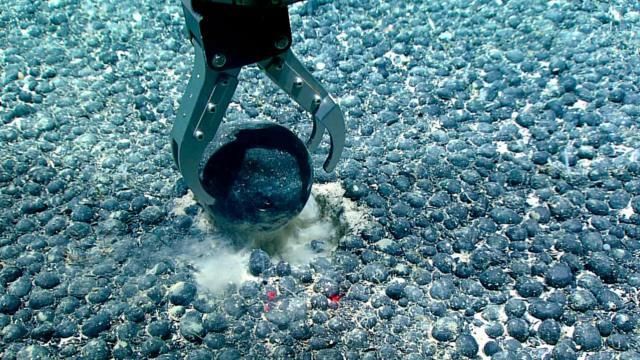 Why in News?
Why in News?
Recently, scientists have reported the existence of an unknown process that generates oxygen deep within the world's oceans, in regions where photosynthesis is impossible due to a lack of sunlight. This finding is significant as it supports marine life and indicates the possibility of previously unrecognized ecosystems.
Key Takeaways
- Unexpected increases in oxygen concentration have been noted in the abyssal zone, an area devoid of sunlight.
- This phenomenon has been termed 'dark oxygen,' representing a new source of oxygen independent of photosynthesis.
Additional Details
- Dark Oxygen: Scientists discovered that certain areas of the abyssal zone exhibited unexpected rises in oxygen levels, suggesting local production of oxygen where photosynthesis cannot occur.
- Possible Cause: One hypothesis suggests that polymetallic nodules may transport electric charges that split water molecules, thereby releasing oxygen. These nodules are found on the ocean floor and consist of iron, manganese hydroxides, and rock.
- Study Location: The research was conducted in the Clarion-Clipperton Zone, located off the west coast of Mexico, which is known for its high concentration of polymetallic nodules.
- Deep-Sea Mining:This process includes extracting mineral deposits and metals from the ocean floor, primarily through the following methods:
- Removal of polymetallic nodules.
- Mining of massive deposits of seafloor sulfides.
- Extraction of cobalt crusts from rock formations.
- Deep-sea mining is anticipated to grow significantly in the coming decades due to the availability of valuable materials essential for technology and renewable energy.
- Environmental Concerns: The discovery of dark oxygen raises alarms regarding potential damage to ecosystems reliant on this oxygen source. Experts warn that deep-sea mining activities could adversely affect these marine environments.
- Recent studies indicate that deep-sea mining might harm deep-sea jellyfish by creating mud plumes that disrupt nutrient cycles and reproductive processes within marine species.
- There is limited scientific understanding of abyssal zone ecosystems compared to those at shallower depths, complicating assessments of the impact of mining on these ecosystems and their role in global climate processes.
In the context of India, the country plans to apply for licenses to explore deep-sea minerals in the Pacific Ocean. India was the first nation to receive the status of a 'Pioneer Investor' in 1987, obtaining an area of approximately 1.5 lakh square kilometers in the Central Indian Ocean Basin (CIOB) for nodule exploration. Additionally, India's exclusive rights for exploring polymetallic nodules were extended in 2017 for another five years. In 2024, India applied for rights to explore the Indian Ocean seabed beyond its jurisdiction, including the cobalt-rich Afanasy Nikitin Seamount. The Ministry of Earth Sciences is also developing a submersible vehicle as part of its 'Deep Ocean Mission' to search for and mine similar resources in the Indian Ocean.
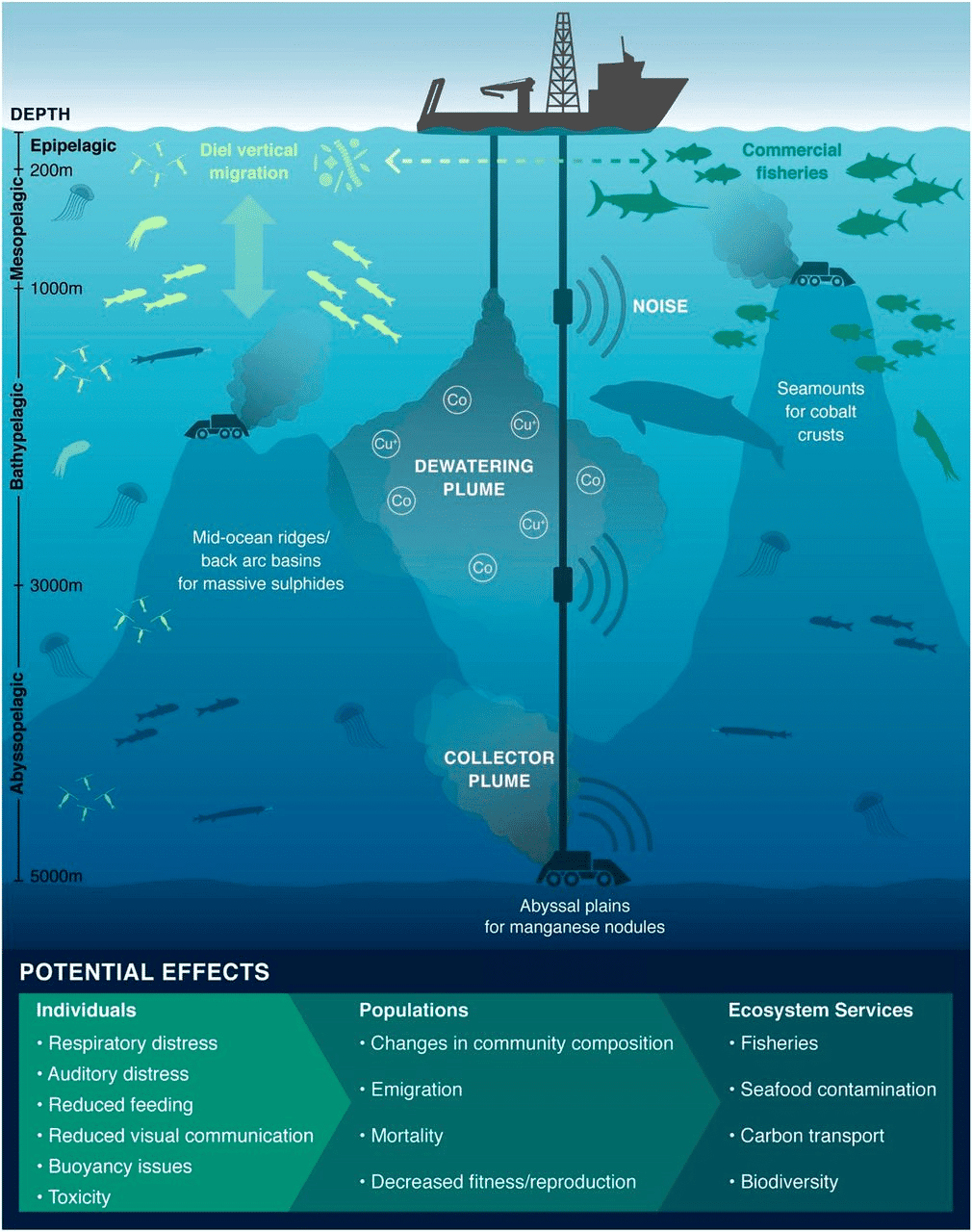
Artificial Intelligence in India
 Why in News?
Why in News?
The Indian government's commitment to advancing artificial intelligence (AI) technology is evident with its new budgetary allocation for the IndiaAI Mission. The Ministry of Electronics and Information Technology has been allocated Rs 551.75 crore in the Union Budget 2024-25 to enhance AI infrastructure, including the procurement of high-performance Graphic Processing Units (GPUs). This move aims to support domestic AI development and reduce reliance on expensive foreign hardware.
Key Takeaways
- The IndiaAI Mission aims to establish a robust AI computing infrastructure in India.
- A budget of Rs 10,372 crore has been approved to enhance computing capacity with over 10,000 GPUs.
- Initial efforts will focus on procuring 300 to 500 GPUs to kickstart the project.
Additional Details
- Objective: The mission aims to improve data quality, develop indigenous AI technologies, attract talent, foster industry collaboration, and support ethical AI practices.
- Financial Support: The mission's funding will help in creating foundational models for priority sectors like healthcare, agriculture, and governance.
- Importance of GPU Procurement: GPUs are critical for training large-scale AI models and essential for operations in AI, media analytics, and 3D rendering.
- Key Components: The mission includes the establishment of an AI marketplace, an innovation center, a datasets platform, and a focus on AI education and startup financing.
The IndiaAI Mission represents a significant step towards transforming India's AI landscape by building essential infrastructure and fostering an ecosystem that supports innovation and ethical practices in AI development.
Thirty Meter Telescope
 Why in News?
Why in News?
Recently, Indian scientists have developed an open-source tool that generates an infrared star catalogue specifically for the Adaptive Optics System (AOS) of the Thirty Meter Telescope (TMT). This advancement is critical for enhancing the capabilities of this groundbreaking astronomical observatory.
Key Takeaways
- The TMT is a revolutionary astronomical project that aims to deepen our understanding of the universe.
- It involves collaboration among several countries including India, the United States, Canada, China, and Japan.
- The telescope features a massive 30-meter primary mirror and advanced adaptive optics technology.
Additional Details
- About the Thirty Meter Telescope: The TMT represents a class of extremely large telescopes designed to observe cosmic objects with unprecedented resolution and sensitivity.
- Primary Goals:
- Study the early universe and the formation of the first galaxies and stars post-Big Bang.
- Investigate the structure and evolution of galaxies over cosmic time.
- Examine the relationship between supermassive black holes and their host galaxies.
- Research the formation of stars and planetary systems.
- Characterize exoplanets and analyze their atmospheres.
- Key Features of the TMT Mirror System:
- Primary Mirror: 30 meters in diameter, made up of 492 hexagonal segments.
- Secondary Mirror: Composed of 118 smaller hexagonal segments.
- Tertiary Mirror: 3.5 meters by 2.5 meters, centrally located within the primary mirror.
- The TMT will be equipped with advanced instruments such as the Infrared Imaging Spectrometer (IRIS) and the Wide-Field Optical Spectrograph (WFOS) for a variety of observations.
- Adaptive Optics System (AOS): The TMT’s AOS, known as the Narrow Field Infrared Adaptive Optics System (NFIRAOS), utilizes deformable mirrors and laser guide stars to correct atmospheric turbulence, thus enhancing image resolution. Indian scientists have contributed by developing a tool to create a comprehensive all-sky catalogue of NIR stars for this system.
The Thirty Meter Telescope represents a significant advancement in astronomical research and international collaboration, promising to unlock new insights into the universe.
Caves on the Moon
Why in News?
Recently, scientists have confirmed the existence of a cave on the moon, located near the site where the Apollo 11 mission landed 55 years ago. This discovery holds significant implications for future lunar exploration and the establishment of a sustainable human presence on the moon.
Key Takeaways
- An Italian-led research team identified a cave in the Sea of Tranquility, approximately 400 kilometers from the Apollo 11 landing site.
- The cave, similar to over 200 others found on the lunar surface, was formed by the collapse of a lava tube.
- Radar measurements from NASA's Lunar Reconnaissance Orbiter indicated that the cave is at least 40 meters wide and extends for several meters, possibly even larger.
Additional Details
- Potential Shelter for Future Astronauts: Lunar caves provide natural protection against cosmic rays, solar radiation, and micrometeorites, which could minimize the need for building habitats from scratch.
- Understanding Lunar Geology and Volcanic Activity: The rocks and materials within these caves have remained largely unchanged by surface conditions over time, offering insights into the moon's evolution, particularly its volcanic history.
- Potential Water and Fuel Sources: Permanently shadowed craters near the lunar south pole are likely to contain frozen water, essential for drinking and as a resource for rocket fuel.
- Advancing Lunar Exploration: The discovery of lunar caves is a crucial step in understanding the moon's geology and resources, facilitating future mission planning and the sustainability of human presence on the moon.
This discovery underscores the importance of lunar caves not only as potential habitats for astronauts but also as valuable sites for scientific research and resource utilization, paving the way for future exploration missions.
Leptospirosis
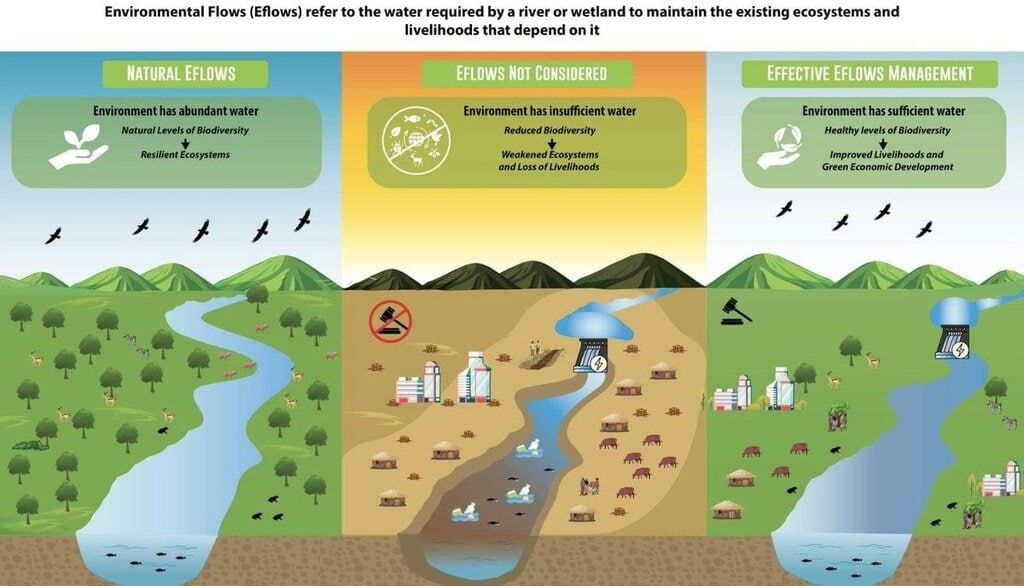 Why in News?
Why in News?
A severe Leptospirosis outbreak has emerged as a major public health concern across Kerala.
Key Takeaways
- Leptospirosis is a rare bacterial infection affecting both humans and animals.
- The disease is caused by the bacterium Leptospira interrogans.
- Transmission occurs through contact with contaminated urine from infected animals.
- Symptoms can appear within 2-30 days after exposure and may occur in two phases.
- Treatment is available with antibiotics such as penicillin and doxycycline.
Additional Details
- Transmission: Leptospirosis is primarily spread by wild and domestic animals, including rodents, cattle, pigs, and dogs. Infected animals shed the bacteria through their urine, which can contaminate water and soil, allowing the bacteria to survive for weeks to months.
- Symptoms: The initial phase may include fever, chills, headache, muscle aches, vomiting, and diarrhea. After a temporary improvement, some individuals may experience a severe second phase, which can involve kidney or liver failure and meningitis.
- Antibiotics: These are medications designed to combat bacterial infections. They function either by killing bacteria or inhibiting their growth. Common antibiotics used for Leptospirosis include penicillin and doxycycline.
In conclusion, Leptospirosis poses a significant health risk, particularly in tropical regions. Awareness of its transmission, symptoms, and treatment options is crucial for prevention and management of outbreaks.

Wolbachia-Infected Mosquitoes for Dengue Control
 Why in News?
Why in News?
Dengue fever, chikungunya, and Zika virus pose significant public health challenges in India, resulting in substantial economic impacts and healthcare burdens. The limited effectiveness of traditional mosquito control methods highlights the necessity for innovative approaches, such as employing Wolbachia-infected mosquitoes, which present a viable alternative.
Key Takeaways
- Wolbachia: A common bacterium found in various insects, including butterflies and bees.
- Aedes Aegypti: A mosquito species that transmits diseases like dengue, Zika, and chikungunya.
- Genetic Modification: Aedes mosquitoes can be genetically modified to contain Wolbachia.
- Production Process: Involves introducing Wolbachia into mosquito eggs for mass production.
Additional Details
- How Wolbachia Works: Wolbachia bacteria do not infect humans or animals. When male mosquitoes carrying Wolbachia mate with wild females, the resulting eggs do not hatch, leading to a decrease in the mosquito population.
- Current Status in India: There is no active Wolbachia mosquito release program. The Indian Council of Medical Research - Vector Control Research Center (ICMR-VCRC) has begun developing wMel Aedes strains but has encountered delays in public notifications and government approvals.
- Natural Presence: Recent findings suggest the existence of Wolbachia in Aedes mosquitoes in Northeast India, although its implications are yet to be fully understood.
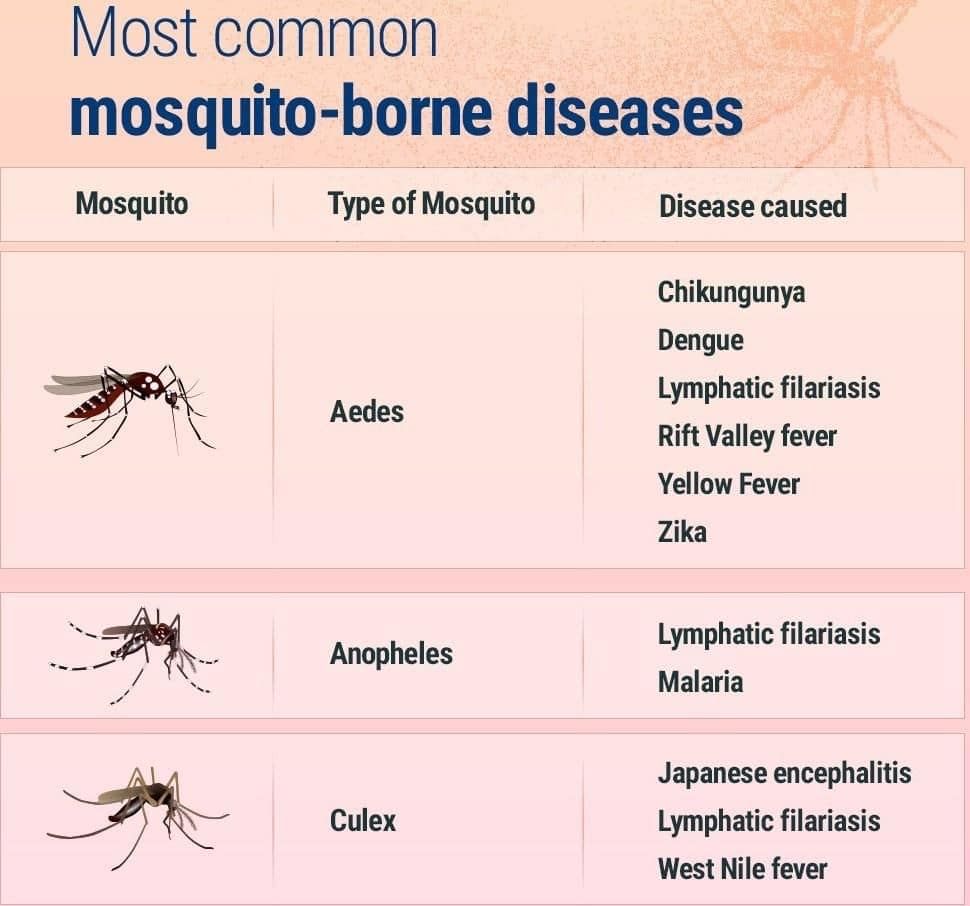
Global Examples for Wolbachia Implementation
- Singapore: The release of infected male mosquitoes led to a 90% reduction in Aedes populations and a 77% decrease in dengue cases in affected areas.
- Australia: Implemented a population replacement strategy resulting in a stable wMel strain in wild mosquito populations, significantly reducing dengue incidence.
- Indonesia: A randomized controlled trial showed that areas with released wMel mosquitoes had a 77% reduction in dengue cases and an 86% decrease in hospitalizations.
In summary, the innovative use of Wolbachia-infected mosquitoes represents a promising strategy for dengue control, with successes observed globally. Continued research and implementation in India could pave the way for effective mosquito population management and disease prevention.
Nanotechnology in Drug Delivery
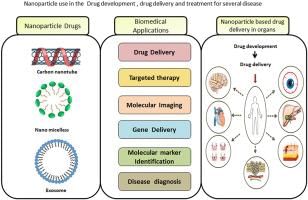 Why in News?
Why in News?
A novel method of drug delivery has been developed, which could significantly benefit patients with conditions such as asthma, cystic fibrosis, human immunodeficiency virus (HIV), cancer, and those who have been on long-term corticosteroid treatments. Researchers have utilized a chitin synthesis fungicide known as Nikkomycin to create Nikkomycin-loaded polymeric nanoparticles. Nikkomycin is derived from the bacterial genus Streptomyces.
Key Takeaways
- About Nanotechnology: This field focuses on designing, producing, and applying systems by manipulating atoms and molecules at the nanoscale, which is defined as having one or more dimensions of 100 nanometers or less.
- Nano Drug Delivery: This technique aims to deliver drugs precisely to target sites within the body, utilizing nanoparticles that can encapsulate drugs or biomolecules or absorb them onto their surfaces.
Additional Details
- Recent Development: The Nikkomycin-loaded polymeric nanoparticles have shown efficacy in inhibiting the growth of Aspergillus species, thereby being useful against the fungal infection known as Aspergillosis.
- Significance: The employment of polymeric nanoparticles represents the forefront of drug delivery methodologies. There is a pressing need for improved delivery systems due to the rising resistance to existing azole antifungal drugs.
- Future Prospects: This advancement may pave the way for the development of inhalation nanoformulations to address pulmonary aspergillosis. Scientists are optimistic about the expansion of antifungal nanoformulations and the potential for public-private partnerships to facilitate commercialization.
Role of Nanotechnology in the Healthcare Sector
- Precision Medicine: Nanoparticles are tailored to deliver medications directly to disease sites, such as cancer cells, thereby minimizing harm to healthy tissues. For instance, liposomes are used for the targeted delivery of chemotherapy drugs, reducing side effects.
- Improved Diagnostics and Imaging: Gold nanoparticles serve as probes to detect specific DNA or RNA sequences, improving the sensitivity and accuracy of diagnostic tests.
- Regenerative Medicine: Nanomaterials can form scaffolds that replicate bone structure, aiding in the regeneration of new bone in patients suffering from fractures or bone loss.
- Gene Therapy: Innovative nanopore technologies are being developed for rapid, cost-effective, and precise DNA analysis through gene sequencing.
- Antimicrobial Treatments: Silver nanoparticles are integrated into wound dressings and medical device coatings to prevent infections, leveraging their potent antimicrobial properties.
In summary, the advancements in nanotechnology for drug delivery promise to enhance treatment efficacy across various medical conditions while addressing challenges associated with existing therapies. The future of healthcare could significantly benefit from these innovative approaches, particularly in precision medicine and improved patient outcomes.
Nuclear Powered Trains
 Why in News?
Why in News?
Indian Railways (IR) is exploring the use of nuclear power through captive units as it seeks to increase reliance on non-fossil fuel sources and renewable energy. Alongside nuclear power, the Railways is also commissioning solar power units and wind-based power plants.
Key Takeaways
- Nuclear power can reduce carbon emissions significantly.
- Indian Railways aims to achieve net zero carbon emissions by 2030.
- The introduction of nuclear-powered trains could enhance energy efficiency and reduce operational costs.
Additional Details
- Nuclear Powered Trains: These trains utilize heat generated from a nuclear reaction to produce high-pressure steam, driving turbines that power the train and generate electricity for onboard systems.
- The concept was first considered in the 1950s by the USSR's Ministry of Transport.
- Functioning: A portable nuclear reactor heats fluid to generate steam, which drives electric turbines for propulsion and power generation.
- Safety Considerations: The use of thorium reactors is under consideration due to their lower radiation risk. Safety features are essential for minimizing risks.
- Potential Benefits:
- Reduced Carbon Emissions: Nuclear power significantly lowers CO2 emissions compared to fossil fuels.
- Energy Efficiency: High energy output with minimal fuel usage can reduce operational costs.
- Low Infrastructure Requirements: Independence from overhead electric lines reduces infrastructure costs.
- Extended Range: Ability to operate for longer distances without frequent refueling.
- High Operational Efficiency: Continuous power supply optimizes rail transport performance.
- Challenges:
- Radiation Risks: Safe handling of nuclear materials and prevention of radiation leaks are critical.
- High Costs: Initial development and implementation costs for nuclear-powered trains are substantial.
- Technical Complexity: Engineering challenges arise in designing and maintaining nuclear reactors for trains.
Indian Railways is actively seeking to reduce its reliance on fossil fuels through nuclear power exploration. Plans include discussions with the Nuclear Power Corporation of India (NPCIL) for developing small reactors and captive power units. The Railways aims to achieve net zero carbon emissions by 2030, requiring 30,000 MW of renewable capacity by 2029-30.
To meet these goals, Indian Railways is enhancing its renewable energy efforts, partnering with organizations like the Solar Energy Corporation of India (SECI) and NTPC. By 2023, IR has commissioned 147 MW of solar power and 103 MW of wind energy, while successfully electrifying over 63,500 kilometers of its network.
Indian Railways consumes over 20 billion kWh of electricity annually, highlighting the need for sustainable energy solutions. With projected power demands increasing significantly, alternative energy sources are essential for meeting future requirements sustainably. The Railway's ambitious electrification targets necessitate significant electricity supply, making the shift to alternative energy crucial.
In conclusion, the need for alternative energy sources in Indian Railways is driven by high energy consumption, increasing demands, and the goal for environmental sustainability. Nuclear energy presents a promising solution for reducing emissions and improving efficiency, although challenges regarding safety, cost, and public acceptance must be addressed as technology advances.
|
38 videos|5283 docs|1116 tests
|
FAQs on Science and Technology - 1 - Current Affairs & Hindu Analysis: Daily, Weekly & Monthly - UPSC
| 1. What is Dark Oxygen and why is it significant in scientific research? |  |
| 2. How is Artificial Intelligence being utilized in India? |  |
| 3. What are the key features of the Thirty Meter Telescope (TMT)? |  |
| 4. What is the significance of discovering caves on the Moon? |  |
| 5. How do Wolbachia-Infected Mosquitoes help in controlling Dengue? |  |
















